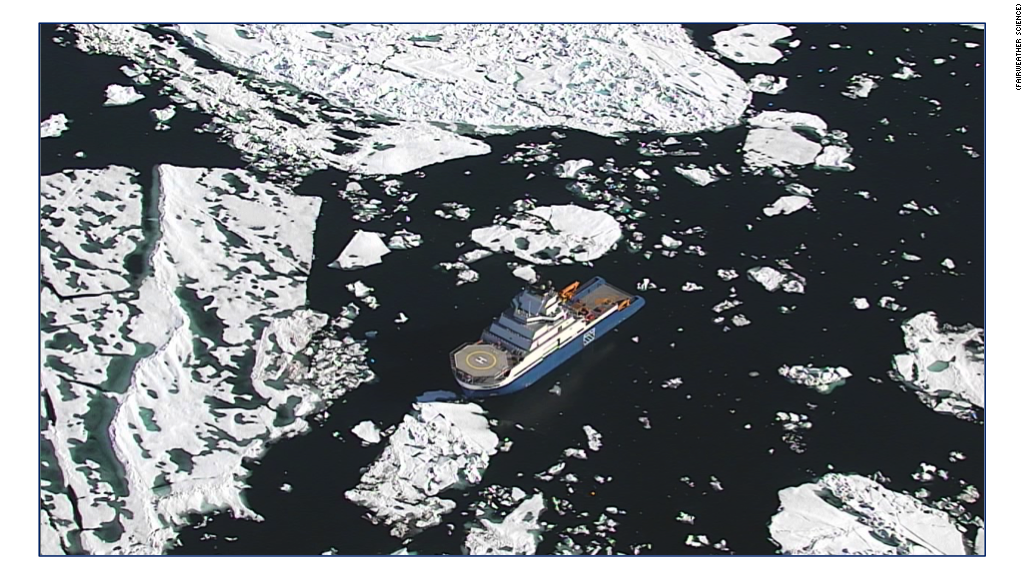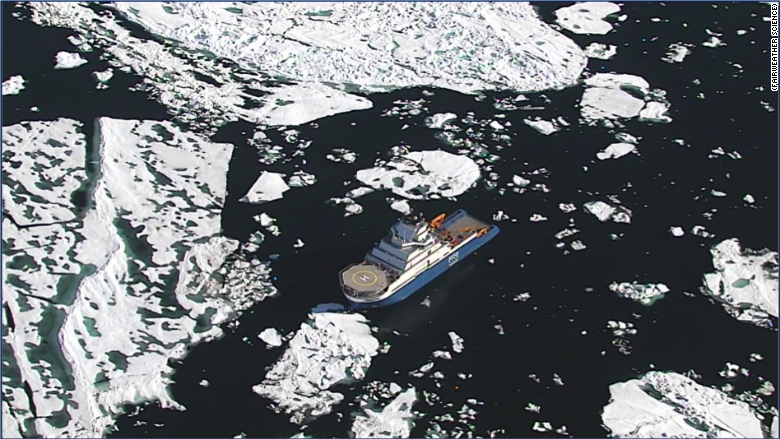
Even in one of the world's most desolate areas, gridlock is still a problem.
A ship on a mission in the Arctic Circle found itself surrounded by blocks of ice this summer. So the ship's crew launched an autonomous drone for a bird's eye view of its situation. Rather than attempting to steer through a maze of ice chunks without knowing what lay ahead, the ship's captain had live footage from the drone to guide it through the most treacherous passages.
The tactic saved the ship more than two weeks.
"If you're trying to get through a corn maze, sending a balloon or periscope up should help a lot," explained Justin Blank, the senior scientist at Fairweather Science, in Anchorage, Alaska, which operated the boat. Blank decided to experiment with the drone on the trip.
His company was hired for the mission, which involved retrieving anchors from the Beaufort and Chukchi Seas. During the month-long voyage, the drone spent 19 hours aloft, generally hovering at several thousand feet. Each morning the ship would contact other companies and individuals that might be flying in the Arctic Circle. This way everyone was aware of the drone and danger was prevented, according to Blank.
Related: Forget your old alarm system. This drone will guard your home.
This was the first time Fairweather used a drone to aid an Arctic ship, and Blank said the tactic hadn't been tried by others. His company plans to use drones in the future.

It's not uncommon for ships to rely on planes or helicopters to help them navigate Arctic waters. But using a manned aircraft is expensive and can turn dangerous if there's fog.
There's always the option of cutting through ice, but only certain boats are capable of that. Plus, pulverizing ice blocks is disruptive to local wildlife.
Blank, who also researches polar bears, wanted a less disruptive solution. He went with a drone called the Flexrotor from Aerovel. It's a 44-pound drone that takes off like a helicopter from a ship deck, and then rotates in the air to glide like a plane. The gas-powered drone has a 12-hour range and flies autonomously. A human on the ship directs its camera.
The drone is specifically designed for surveillance at seas.
"This was a prototypical mission," said Tad McGeer, the president of Aerovel. Previously his drone has been used to look for illegal fisherman in a Costa Rican national park.
He's expecting more business in Arctic waters. The area is opening up to tourists due to climate change. This summer, a cruise ship, the Crystal Serenity, sailed the Arctic in a landmark journey.
It seems there will continue to be a market for drones to help navigate Arctic ice, at least until it all melts.

